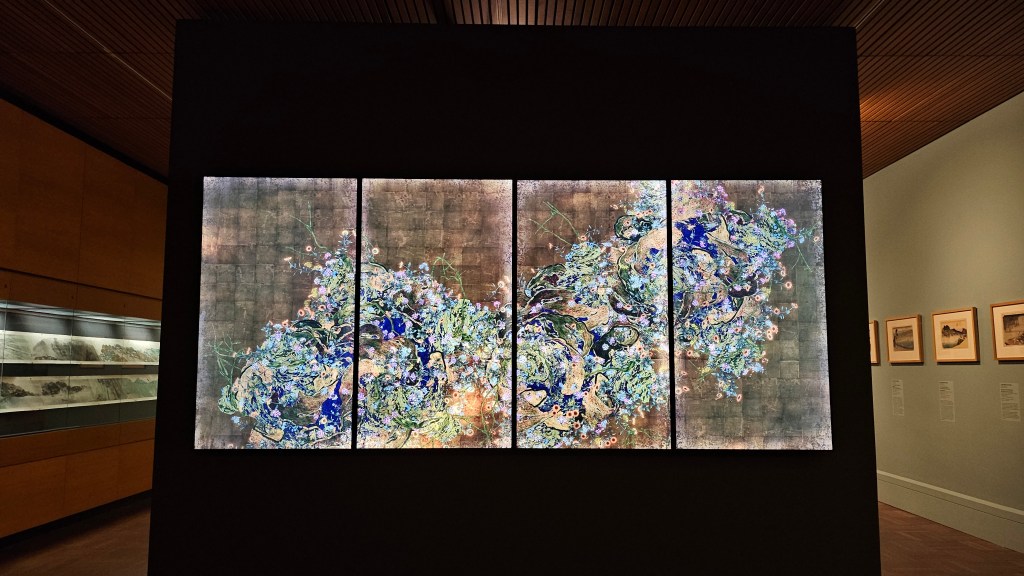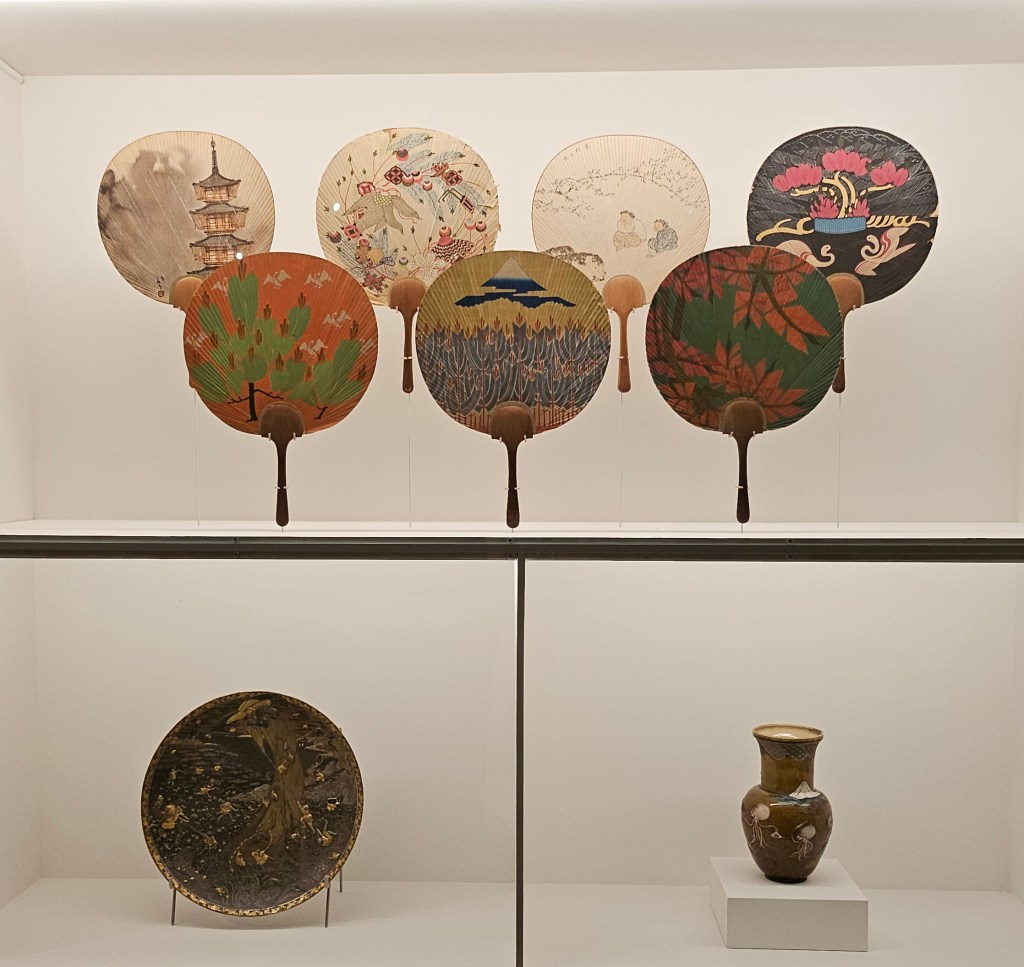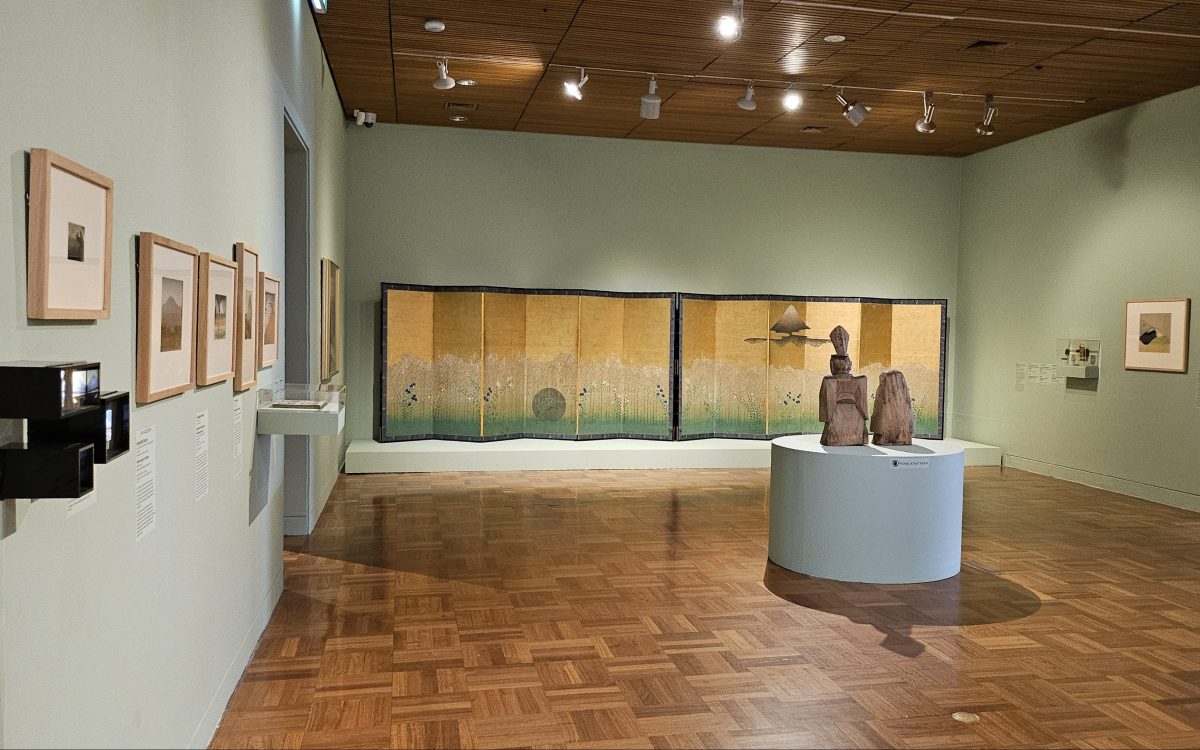Descending from the staircase into one of the entries to Misty Mountain, Shining Moon: Japanese landscape envisioned at Art Gallery of South Australia (AGSA), visitors are instantly transported into multiple vantage points of viewing the iconic Mount Fuji.
Surrounded by walls painted a shade of matcha-pistachio, two wooden figures direct one’s view towards the glistening panel screens. Made in mid-18th century Japan, The plain of Musashi, Mount Fuji and the moon depicts, in lush tones of gold and green, the peak of the sacred mountain with which many have become familiar through photos and its unfaltering presence in the history of art.
This rich collection of imagery around Mount Fuji forms the first pillar of Misty Mountain, Shining Moon, which presents the subject in a range of mediums, from the woodblock prints of Takeuchi Seihō (1864–1942) and Katsushika Hokusai (1760–1849) to hand-coloured pieces from the first generation of Japanese photographers.
Large-scale panels, from the traditional to the digital, were the focal points for this writer, which together become cornerstones in different sections of the exhibition. Mountain landscape (c.1930) by Yukawa Sanshū measures over 1.7 metres high by 7.4 metres long and has a demanding presence that can’t be overlooked. The artist masterfully welded ink that brought to life the lofty landscape. The Eastern literati philosophy of respecting and admiring nature’s forces over human activity is reflected in the piece, with sublime mountains towering over dainty straw huts. It speaks directly to Curator, Asian Art, Russell Kelty’s brief for the section, which is entitled ‘Landscapes in the heart and mind’.
Interdisciplinary art collective, teamLab’s digital panel, Ever Blossoming Life II – A Whole Year per Hour, Gold (2016) is a delightful and awe-inspiring inclusion. Kaleidoscopic blooms slowly form and disintegrate in a hypnotic loop that captures the wonder of life cycles. Seasonal motifs continue in the section entitled ‘Lyrical landscapes’, popular during the Heian and Edo periods. Another beautiful display in sculptural form is a new acquisition of Yoko Togashi’s glass, Bloom softly 1-22 (2022) – the brittle material shaped to replicate the delicacy and lightness of petals.

Objects and curios fill the glass cabinets across the compact exhibition, and are in the form of fans, vases, decorative porcelain, water jars and even an elaborate Japanese picnic set from c. 1850.

The Japanese landscape through the eyes of voyagers concludes the exhibition with works by 19th century woodblock print artists. Their vivid depictions of landscapes throughout the region underscore the mobility they were afforded through the easing of restrictions. Postcard-sized prints and sketches were also easy to carry, so that artists could work on the road to capture ephemeral sights and the changing seasons.
Read: Exhibition review: Vincent Namatjira: Australia in Colour, Art Gallery of South Australia
Through examining the aesthetic, but also cultural, aspects of the Japanese landscape from past to present, Misty Mountain, Shining Moon offers a deep dive into the connections artists have formed with nature with a succinct and beautifully curated exhibition.
Misty Mountain, Shining Moon: Japanese landscape envision is on view at AGSA until March 2024; free.
This writer travelled to Adelaide as a guest of OzAsia Festival and the Adelaide Festival Centre.





